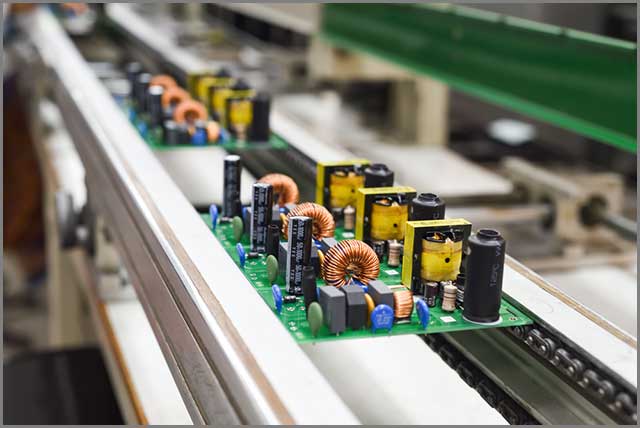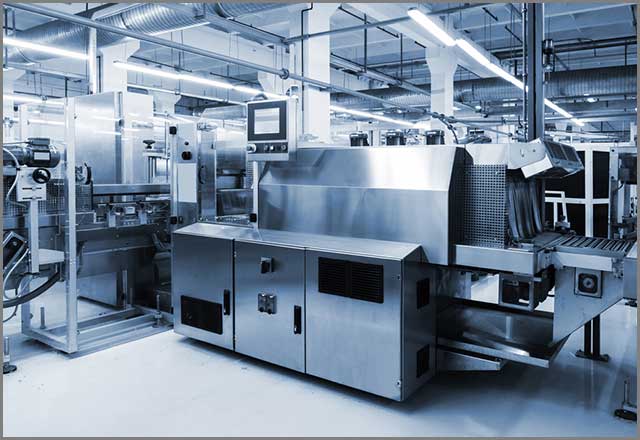Wave Soldering-The Ultimate Guide To Effective Soldering
Do you want to solder electronic components on your printed circuit board quickly? Do you find it time-consuming to solder them using the soldering irons manually? It is also unsafe to inhale smoke for a long time. So, who would not want to look for an alternate way of soldering? You just got lucky as there is another standard way of soldering and is super quick. Can you guess what we are talking about? It is wave soldering!
This process of soldering will allow you to make several printed circuit boards in a short time. So, this article is all about wave soldering. Stay put.
Back to the days when surface mount technology was not entirely developed, “wave soldering” was a very famous soldering technique. Nearly every PCB used wave soldering for placement of electronic components. Wave soldering is a mass soldering procedure that will permit you to make many PCBs in a short time.
You will need to pass every PCB over a pan of liquefied solder. There, a pump will create a surge of solder that will resemble a standing “wave.” This standing wave showers over the printed circuit board and the electronic components will get soldered to the PCB. So, the contact between the solder and the wave does the magic.
After that, the printed circuit board gets blowing air or water spray for safe cooling. This cooling process will secure the components in their place. Furthermore, wave soldering is usually done in a shielding gas environment as nitrogen usage is helpful in mitigating solder defects. Figure 1 shows electronic components placed on PCB and all ready to go under the soldering machine.
Technically, this soldering process utilizes a whole container of tin for performing welding. Tin goes through high temperatures, which melt its bar and molten tin is formed. The liquefied tin is taken as “lake water.” It is called “leveling wave” when the lake is static and horizontal. And, It is called “spoiler wave” when there are waves in the lake.
The printed circuit board can be considered as a boat. It will float over the rough or calm lake, permitting the tin to attach electronic parts to the board. Then after the tin bath, you will see that it will cool rapidly and the solder will do its job. And, what is that? Of course, it will solder the electronic components to the PCB.
Moreover, you should make sure that temperatures are adequate during this process. If the temperature control is not enough, the circuit board can experience mechanical stress. That, in turn, will lead to conductivity loss and cracks. And, a low soldering temperature can cause improper solder thickness that can further lead to board stress.
Luckily, wave soldering can be used for both surface mount and through-hole printed circuit boards assemblies. In surface mount, you will need to glue electronic components onto the PCB surface using placement equipment. After that, it will be ready to pass via the liquefied solder wave.
In general, wave soldering is mostly used for welding of through-hole electronic parts. Hence, in many large-scale applications, where surface mount components are mostly used, you can use reflow soldering instead of wave soldering. Now you must be wondering what reflow soldering is? Don’t worry; we will get to it shortly.
However, you can always use wave soldering for the applications which broadly makes use of through-hole components. We hope that by now you know the basic concept of wave soldering. In the next chapter, we have described the wave soldering process in detail.
In the market, you will encounter many kinds of wave soldering machines. You can buy lead wave solder machines or lead-free wave solder machines. It is all up to you. However, the main principles and fundamental parts of all of these machines are alike. A conveyor is a fundamental part that is used during this process. It takes printed circuit boards via various zones.
Next, you will see a pan of solder and pump that is responsible for generating the main wave. Furthermore, you will also get a flux sprayer and a preheating pad. Hence, these four main parts make up a soldering machine. The solder in wave soldering machines is mostly made up of metals’ mixture.
If the machine has leaded solder, it will contain 49.5% lead, 50% tin, and 0.5% antimony. However, in the latest machines, lead-free models are available due to health concerns. So, tin-copper-nickel and tin-silver-copper alloys are frequently used. Figure 2 illustrates a wave soldering machine.
Currently, tin alloys for soldering are regularly using Sn 60/Pb40 and Sn 63/Pb37. Therefore, it is recommended that you should make sure that the operating temperature stays around 260° ± 5°C. Nonetheless, you should also take into account the overall weight of PCB and the parts.
Practically, heavy components can be heated up to 280°C. And, lightweight components, which are heat-sensitive, can be heated at a temperature as low as 230 °C. Further, you should also consider preheating and the conveying speed. Figure 3 shows close up of melting tin.
In this guide, we have explained everything related to the wave soldering process. We have even mentioned the alternates of soldering methods. We aimed to clear out any questions you may have regarding wave soldering. Now, you can easily decide which method of soldering is suitable for you and when.
Moreover, you can contact us if you want to manufacture PCB or want its assembly. You can even ask us about the techniques we use for PCB assembly. We will guide you in every possible way.
And, if you have any questions, our team of experts and engineers will answer them at their earliest. We know how to take care of your interests and needs. Contact us at sales@ourpcb.net.


Comments